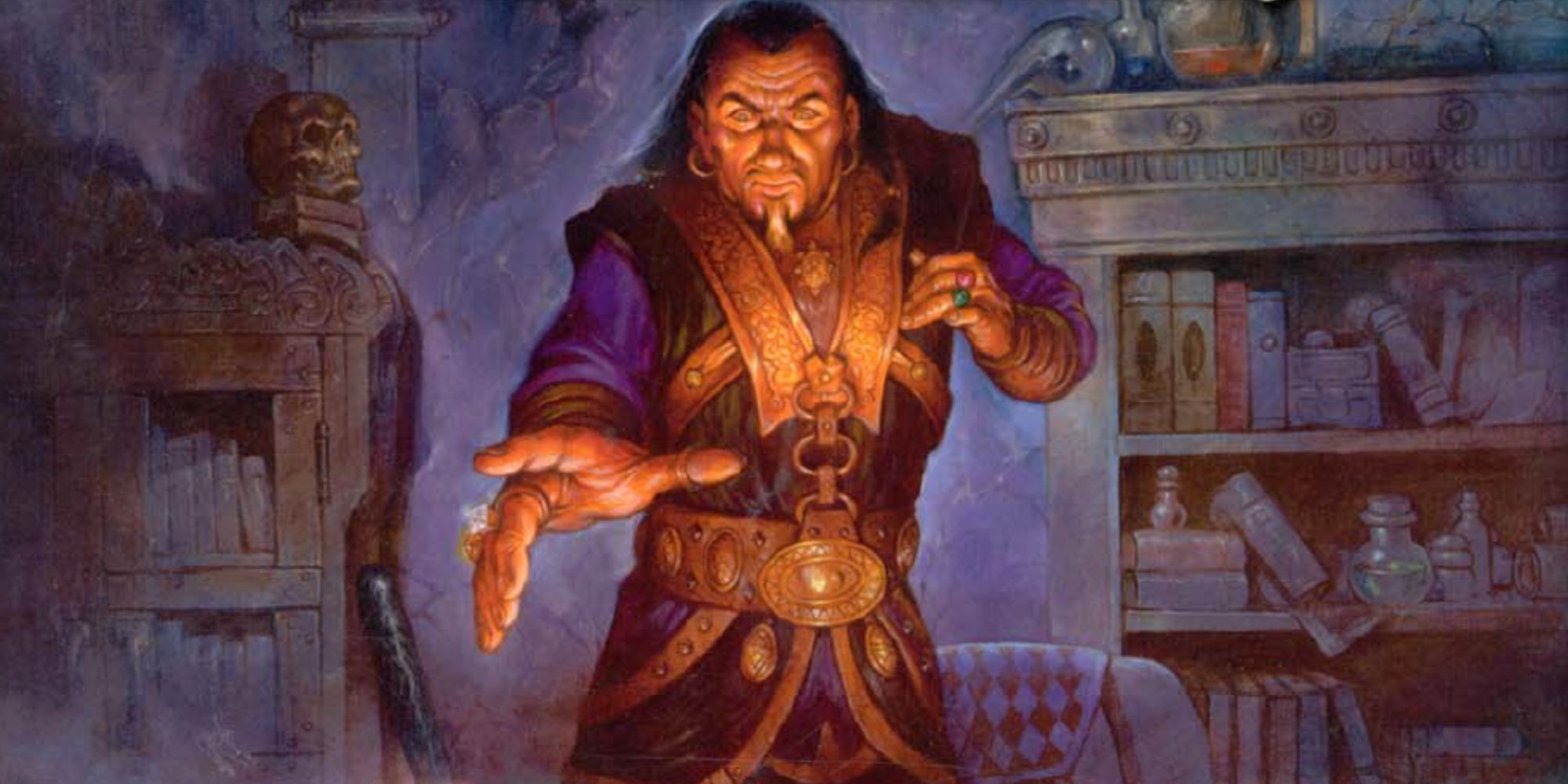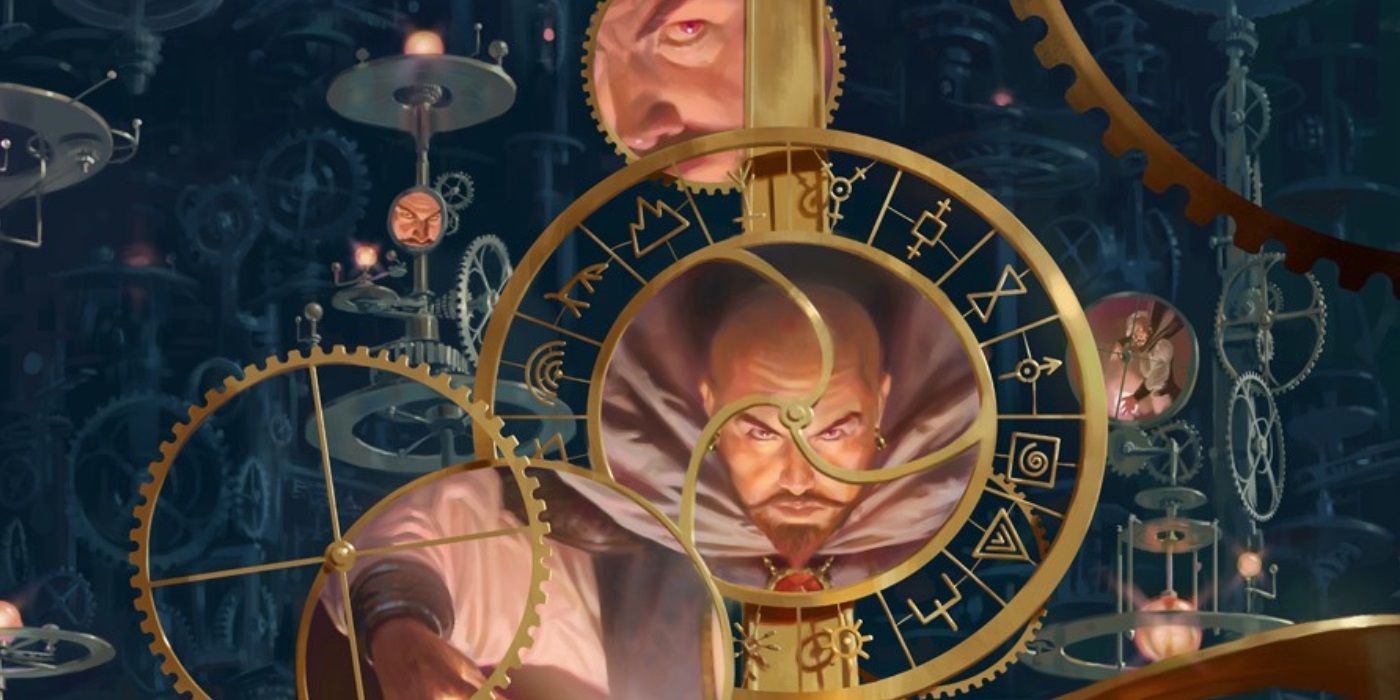A new iteration of Dungeons & Dragons is on the way and it has a chance to bring back some arcane spells that didn't make the jump to 5e. One D&D's first Unearthed Arcana has confirmed that One D&D is breaking spells into three categories, which is something many players already did. In the new rules, artificers, bards, sorcerers, warlocks, and wizards use arcane magic, clerics and paladins use divine magic, and rangers and druids use primal magic.
Arcane magic is the kind that makes up the fabric of the multiverse, with some planets having a specific source of arcane magic, like the Weave in the Forgotten Realms. There are different ways to tap into it, with some doing so through intense study, which is how bards and wizards gain spells. Those who wish to cut corners can make a deal with a higher power that isn't a god, which is how warlock's gain magic, while some naturally have the ability to cast spells, which is how sorcerers use magic.
There have been many arcane spells created throughout the history of D&D, yet not all of them made the cut for D&D 5e. The D&D 5e books will be revised in 2024, as part of the 50th anniversary celebrations for the game, and the developers of D&D are already releasing playtest material for this new iteration of the game. An overhauled Player's Handbook is the perfect place to bring back arcane spells from older editons of D&D.
Arcane Mark Was An Easy Identification System In D&D
The D&D campaign worlds might lack cans of spray paint, but spellcasters used to be able to tag to their hearts' content, thanks to the arcane mark spell. In D&D 3e, arcane mark was a cantrip that allowed the caster to create a magical rune on a surface, which acted as their own personal form of identification. Arcane mark was a great way of leaving a message for others to find, such as when being kidnapped or on the run, as well as providing a means for letting characters know that specific characters have handled an item or message. This was because it was possible to make the rune invisible so that only spells from D&D's Divination school of magic could see them. The fact that arcane mark could also be left on a living person (even if it only lasted for a month) could also be used as a means of letting people recognize members of a resistance movement or a spy that the group needs to get in contact with.
The D&D 5e cantrips list includes spells for each of the three categories that perform a range of minor tricks. These cantrips are the arcane prestidigitation, the divine thaumaturgy, and the primal druidcraft. The minor effects of these spells would have been perfect for introducing arcane mark as one potential outcome of the spell, but these cantrips only last for a short time. Arcane mark either needs to return as its own spell or have it be included as a function of prestidigitation.
Wail Of The Banshee Was A High-Level Save Or Die Spell
D&D 5e changed some rules from older editions, as there are far fewer spells that can instantly kill an enemy. The death spell from AD&D is gone, while spells like phantasmal killer and cloudkill have been nerfed to take out their instant death effects. One of the few spells that retain an instant death effect is the level 9 power word kill spell, which can kill an enemy with 100 or fewer hit points with no saving throw or spell resistance. The problem is that 100 hit points are nothing by the time the character becomes strong enough to cast power word kill, with most CR 9 creatures having more hit points than that, never mind CR 17.
There is plenty of room for some instant death spells in D&D 5e, especially at the higher levels. The wail of the banshee spell from earlier editions fits the bill, as it causes the caster to emit a scream with a save or die effect. The drawback is that it has a shorter range than other spells of the same level that deal damage, such as meteor swarm, so the caster has to get close to the enemy, and the save bonuses of high-level monsters mean it has a good chance of failing.
Permanency Gave Permanent Buffs In Exchange For Experience Points
There are lots of buffing spells available to spellcasters in D&D, many of which belong to D&D's Enchantment school of magic, as well as the Transmutation school. In the days of D&D 3e, there was a way of making some buffing spells permanent, though it came with a high cost. This was thanks to the level 6 permanency spell, which gave the caster permanent enchantments, so long as they had a minimum caster level for the effect and were willing to spend experience points.
The permanency spell let the caster make the arcane sight, comprehend languages, darkvision, detect magic, read magic, see invisibility, and tongues spells permanent on themselves. They could also use permanency on other people, granting them the effects of enlarge person, magic fang, greater magic fang, Rary's telepathic bond, reduce person, and resistance. The D&D characters with a stronghold to protect had even more options, as permanency could be cast on an area, with spells like alarm, prismatic sphere, and symbol of death all potential options.
The problem with including permanency in D&D 5e is that the spell requires the caster to give up experience points for each permanent enchantment. D&D 5e has the milestone system as an option, where characters level up at specific points in the story, rather than gaining experience points. As such, a new version of permanency should replace the experience points with a material cost, such as gold or gems, in order to restrict how often the players can use it.
Energy Drain Could Peel Away A Character's Levels
The undead and the necromancers of the D&D multiverse took a major hit in D&D 5e, as the energy-draining mechanic from the older editions was removed. In old editions of D&D, there were some monsters and spellcasters with the ability to wield negative energy, which weakened enemies in a way that stripped their levels. This effect was often annoying for players to work out in the middle of combat and it used to be a pain to undo, which was likely why energy draining was scrapped in D&D 5e.
D&D's school of necromancy is lacking in level 9 attack spells, as neither astral projection nor true resurrection is used for combat. The energy drain spell from older editions should make its return, with an effect that lowers an enemy's maximum hit points and proficiency bonus, as well as remove spell slots or temporarily burns the use of Legendary Actions (when used on NPCs). This would give the Dungeons & Dragons necromancers an ultimate spell to throw at enemies.





